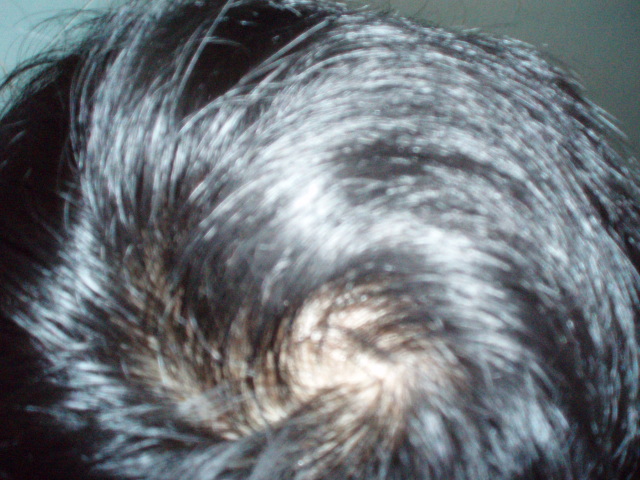Norwood-Hamilton Classification
In the 1950's, Hamilton classified the patterns of baldness based on frontal and frontotemporal recession and vertex thinning. In the 1970's, Norwood improved on Hamilton's system and produced the seven category system. In addition to developing this classification system, Norwood also showed that young men in early stages of baldness will progress steadily in degree of hair loss as they grow older. | |
| Type I | |
The Type I category is characterized by no recession or by very minimal recession along the anterior border of the hairline in the frontotemporal region. |  |
| Type II | |
Type II is characterized by triangular areas of recession along the anterior border of the frontotemporal region. These tend to be symmetrical and extend no further than 2 cm back from the natural hairline. Hair is also lost to a lesser extent along the midfrontal border of the scalp. |  |
| Type III | |
The Type III classification is the minimal extent of hair loss sufficient to define baldness. Deep, usually symmetrical, frontotemporal recessions are bare or very sparsely covered with hair. |  |
| Type IV | |
The Type IV classification involves a frontal and frontotemporal recession, which is more severe than Type III. A sparseness or absence of hair in the vertex area is evident, and areas of recession are separated from each other by a band of moderately dense hair that extends across the top of the scalp. |  |
| Type V | |
The Type V classification is basically the same as Type IV, but each area of baldness is larger. The band of hair across the crown is narrower and sparser. |  |
| Type VI | |
In the Type VI classification, the band of hair across the crown is gone, and the entire area of hair loss has increased laterally and posteriorly. |  |
| Type VII | |
Type VII is the most severe form of male pattern hair loss. All that remains is a narrow horseshoe of hair which begins just in front of the ear and extends around the back of the scalp and neck. This remaining hair is not dense and is frequently fine. |  |



No comments:
Post a Comment